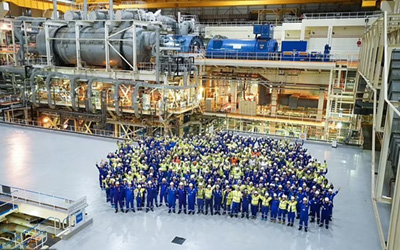Sizewell The Good The Bad & The Ugly
Sizewell C, is the second nuclear power station to be constructed in the UK since 1995. It is located on the Suffolk coast in England, it represents a significant step towards meeting the UK’s energy needs while transitioning to cleaner and more sustainable sources of power. With growing concerns over climate change and the need to reduce carbon emissions, the development of Sizewell C has garnered both attention and controversy.
Background and History
The journey towards Sizewell C dates back to the early discussions on nuclear energy in the UK. The site, which already houses Sizewell A and B, has been a focal point for nuclear power generation since the 1960s. Sizewell A, a Magnox reactor, commenced operations in 1966, followed by Sizewell B, a pressurized water reactor, which began operating in 1995. Sizewell C will add about 25,000 GWh of electricity to the national grid using the latest generation of EPR reactors, which are safer, cleaner, and more efficient than any of its predecessors.
Sizewell C Project Overview
Sizewell C is planned to be a twin-unit European Pressurised Reactor (EPR), designed to produce reliable and low-carbon electricity for over six million homes. Situated adjacent to Sizewell B, the new facility aims to capitalise on existing infrastructure while leveraging advanced technology to enhance safety and efficiency.
Environmental Concerns
Despite its potential to reduce carbon emissions, the construction and operation of Sizewell C have raised environmental concerns. Critics argue that the project could have adverse effects on local wildlife, particularly marine ecosystems, and stress the importance of robust waste management strategies to minimise environmental impact. Sizewell C environmental team, together with their environmental partners, created
Wild Aldhurst which alongside other measurements they are taking will protect and enhance nature. In the long run their environmental measures will lead to a 19% net gain in biodiversity.
Economic Impact
The development of Sizewell C is expected to create thousands of jobs during construction and operation, providing a significant boost to the local economy. Additionally, the project is anticipated to enhance energy security and contribute to the UK’s goal of achieving net-zero emissions by 2050.
Suffolk County Council and East Suffolk Council submitted on 12 May 2021 their joint Local Impact Report to the Planning Inspectorate, as a key examination document.
The Local Impact Report sets out the Councils’ assessment of the likely impacts of the proposed development, and considers whether the proposed mitigation is appropriate or additional mitigation is required.
The submission to the Planning Inspectorate includes also a significant number of Annexes and Appendices, which are being published on the Planning Inspectorate website.
Community Engagement
Ensuring transparency and community engagement has been a key aspect of the Sizewell C project. Stakeholders, including local residents, environmental groups, and government agencies, have been involved in the planning process to address concerns and incorporate feedback into the project design.
Growing the local economy, Sizewell C is a once in a generation opportunity for East Suffolk and will create thousands of well paid local jobs and opportunities for businesses across the region. SARR logistics UK have registered their services with the Sizewell C Supply Chain project and would urge any local businesses to do the same.
Safety Measures
Nuclear safety remains paramount in the planning and execution of Sizewell C. Stringent safety protocols and emergency preparedness measures are being implemented to mitigate potential risks and ensure the protection of workers, residents, and the environment.
Regulatory Approvals
The development of Sizewell C requires regulatory approvals from various government agencies, including the Office for Nuclear Regulation and the Environment Agency. Compliance with stringent safety and environmental regulations is essential to secure permits and licenses for construction and operation.
The Sizewell C application was granted development consent on 20 July 2022, by the Secretary of State for Business, Energy and Industrial Strategy. Sizewell C Company plan for commencement and start of construction of the scheme to be in 2024, with pre-commencement works already underway.
Further details of the proposals are available on EDF Energy Sizewell C and on the Planning Inspectorate Sizewell C website. East Suffolk Council’s website provides further detail focussed on the District Council’s responsibilities in the project.
Timeline and Progress
 Construction of Sizewell C is underway, with periodic updates provided on project milestones and progress. While challenges may arise during the construction phase, efforts are being made to adhere to timelines and deliver the project on schedule.
Construction of Sizewell C is underway, with periodic updates provided on project milestones and progress. While challenges may arise during the construction phase, efforts are being made to adhere to timelines and deliver the project on schedule.
Estimates suggest a construction period of nine to twelve years from the start of building, putting the earliest possible commissioning date in the mid-2030s, assuming construction starts in 2024-25 and progresses without significant delays.
Opposition and Controversies
 Despite its potential benefits, Sizewell C faces opposition from anti-nuclear activists and concerned citizens. Legal challenges and protests have highlighted differing perspectives on nuclear energy and the perceived risks associated with its proliferation.
Despite its potential benefits, Sizewell C faces opposition from anti-nuclear activists and concerned citizens. Legal challenges and protests have highlighted differing perspectives on nuclear energy and the perceived risks associated with its proliferation.
Anti-nuclear power campaigners have also argued Sizewell C will be too slow and expensive to build to “urgently and efficiently meet decarbonisation targets”.
They have said the government’s impact assessment, published with the Nuclear Energy (Financing) Bill, for a notional power station, contains cost ranges of £26.3bn to £42.8bn with construction times of 13 to 17 years.
The group says the type of reactor EDF wants to build has an “appalling track record”.
Hinkley C – the newest of the UK’s planned nuclear power stations – is already expected to be 30% over budget at £22-26bn, and is behind schedule.
Campaigners have also highlighted technology failures at other power stations, including a leak in a fuel rod housing at the Taishan plant in China.
They also dismissed claims that the nuclear power was “home grown”, saying that the design, developers and operators would all be “foreign”.
International Comparison
Sizewell C is part of a broader international trend towards nuclear energy expansion, with similar projects underway in countries like France, China, and Finland. Comparative analysis of these projects provides valuable insights into best practices and challenges associated with nuclear power generation.
Future Prospects
Looking ahead, Sizewell C represents a significant milestone in the UK’s transition to a low-carbon energy future. Beyond its immediate benefits, the project underscores the importance of nuclear energy in achieving long-term sustainability goals and reducing reliance on fossil fuels.
Conclusion
Sizewell C holds promise as a crucial component of the UK’s energy infrastructure, offering clean, reliable, and secure electricity for generations to come. While challenges and controversies persist, the project’s potential to drive economic growth, enhance energy security, and mitigate climate change cannot be overlooked.
The UK must produce more electricity, the UK needs clean energy, and the UK must improve energy security.
Given these three pillar truths about the UK’s energy sector, building Sizewell C will be beneficial, even if its price tag and siting are not ideal. Countries like South Korea, France and China have proven that nuclear gets cheaper with established expertise and ‘cookie-cutter’ builds, and pulling the plug on nuclear now would break all momentum.
On the other hand, the UK would be unwise to put all of its eggs in the nuclear basket. Combined with energy storage, wind, geothermal and solar technologies are poised to become equally robust at a much lower price while providing full independence from Uranium suppliers and the nagging worry of nuclear safety and waste management.
This leaves us with a clear conclusion. Yes, build Sizewell C and another handful of ‘cookie-cutter’ reactors to ensure ample baseload nuclear energy. The remaining effort should go to renewables, which are already significantly cheaper and poised to be equally robust and even more efficient with the rise of cheap energy and distributed grid technologies.
FAQs
 Is Sizewell safe for the environment? Sizewell is subject to rigorous environmental assessments and regulations to minimize its impact on the environment. Measures are in place to protect wildlife and ecosystems during construction and operation.
Is Sizewell safe for the environment? Sizewell is subject to rigorous environmental assessments and regulations to minimize its impact on the environment. Measures are in place to protect wildlife and ecosystems during construction and operation.How will Sizewell impact the local community? Sizewell is expected to create employment opportunities, stimulate economic growth, and contribute to the local economy. However, concerns about its impact on amenities and infrastructure are being addressed through community engagement and planning.
What are the main challenges facing the Sizewell project? The Sizewell project faces challenges related to regulatory approvals, environmental concerns, and public perception. Addressing these challenges requires collaboration among stakeholders and adherence to stringent safety and regulatory standards.
How does Sizewell compare to other nuclear power plants? It utilises advanced technology and lessons learned from existing nuclear power plants to enhance safety, efficiency, and reliability. Comparative analysis with other projects provides valuable insights into best practices and areas for improvement.
What are the long-term benefits? It offers long-term benefits such as reliable electricity generation, reduced carbon emissions, and enhanced energy security. Additionally, the project contributes to the UK’s transition to a low-carbon economy and supports sustainable development goals.



 Is Sizewell safe for the environment? Sizewell is subject to rigorous environmental assessments and regulations to minimize its impact on the environment. Measures are in place to protect wildlife and ecosystems during construction and operation.
Is Sizewell safe for the environment? Sizewell is subject to rigorous environmental assessments and regulations to minimize its impact on the environment. Measures are in place to protect wildlife and ecosystems during construction and operation.





